Part 1: Introduction
Introduction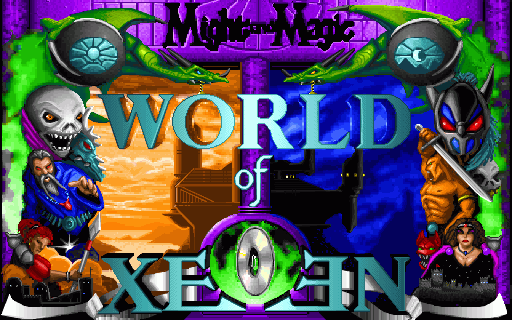
Might and Magic: World of Xeen is actually two RPGs rolled into one -- or one game that was originally sold as two, depending on how you see it.
Might and Magic IV: Clouds of Xeen was released by New World Computing in 1992, while its sequel Might and Magic V: Darkside of Xeen was released in 1993. The two games are set on opposite sides of a single world, and players who owned both games could travel freely back and forth between both sides, using the same characters to complete both games. The plot of the fifth game concludes the story arc begun in the first three games in the series -- more detail on that as it becomes relevant.
Clouds and Darkside were designed from the start to work as a unified whole: finishing certain late-game quests and achieving the true ending requires visiting locations on both sides of the world. As such, I'll be treating them both as a single game and playing through them both in this thread. However, I'll be fully completing the main quest of Clouds before even touching Darkside, because Darkside is balanced for much higher-level characters than Clouds: completing all the quests in Darkside's first town alone will give the party enough experience and treasure to trivialise about the first half of Clouds.
I'm going to be playing the Macintosh CD release of World of Xeen, which includes both Clouds and Darkside bundled together on a single disc. If you're interested in playing World of Xeen for yourself, the easiest way is to get the Might and Magic Limited Edition Pack for $10 off Good Old Games, which includes all of the first 6 M&M games. Compared to the Mac version, the GOG edition has slightly less pretty graphics and doesn't include full voice acting for all dialogue, but it's still very playable.
Anyway, let's get to the basics of the game itself.
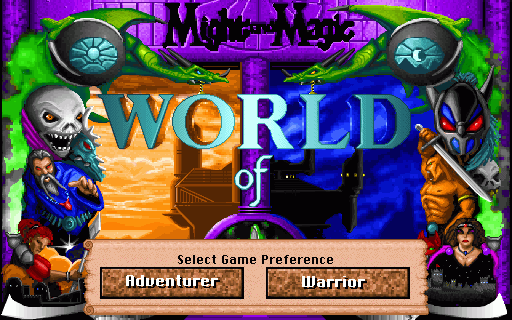
The very first decision we're given when we try to start a new game is whether to play in Adventurer or Warrior mode. The documentation isn't very clear about the exact effects of this, but it's essentially a combat difficulty setting: on Adventurer, your party's physical attacks have a bonus to hit and do 3 times normal damage, making the game dramatically easier. I'll be playing on Warrior, to try and maintain some semblance of challenge. This game really isn't all that difficult either way.

We start out in the town of Vertigo, just outside the tavern. The game seems intent on hurling us right into the action: there's an enemy just a couple of steps in front of us.
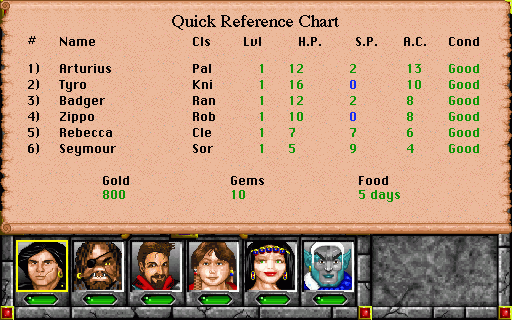
We're given a pregenerated party to use if we want. They're a reasonably balanced team with very solid starting stats, but playing with pregen characters is boring. Instead, we'll be stripping them of their starting equipment and replacing them with an all-star team of characters submitted by forum posters from my previous LP thread.
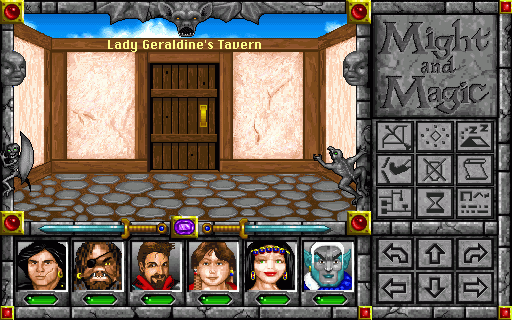
So we'll ignore the monster in front of us, turn right around, head through the door to the tavern and walk up to the bar.
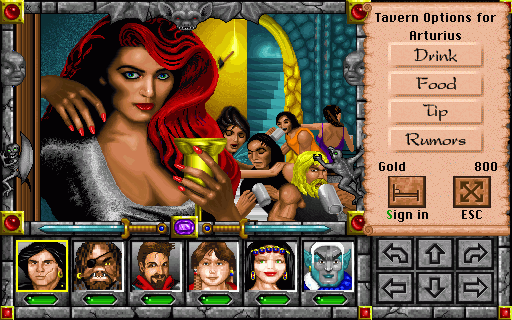
There are a number of important or interesting things we can do in taverns, but right now we want the Sign In option. In addition to automatically saving our game, this allows us to create new characters and adjust our party composition.
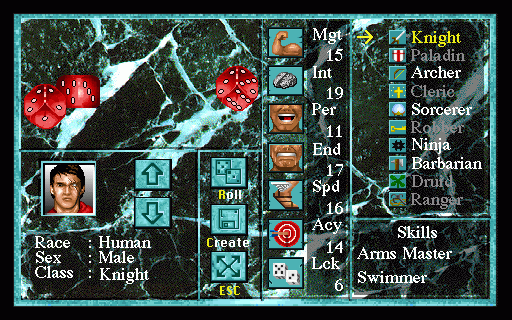
Characters are defined by their class, race and seven vital statistics. Statistics are generated randomly at character creation and can initially range from 3 to 21. Might affects damage output with melee and missile weapons; Intellect and Personality affect Sorcerer and Cleric spell point totals respectively; Endurance affects hit points; Speed affects both turn order and armour class; Accuracy is self-explanatory; Luck probably helps with picking locks and disarming traps, improves the character's chance to resist harmful effects and may provide other nebulous benefits. Class determines a character's weapon and armour options, combat ability and magical prowess, so selecting a class is the most important decision we'll make for every character. Race has a relatively minor effect on hit points, spell points and resistances, and a character's sex is purely cosmetic.
Each class has minimum statistic requirements in one or more stats: greyed-out classes are ones this character doesn't qualify for. Luckily, not only can we reroll a new set of stats as many times as we like, but we can swap pairs of stats around to get exactly the configuration we want. As a rule of thumb, at least one 19 and two 15s is a pretty good set of starting scores to shoot for when making most characters. But don't sweat it too much: there'll be opportunities to increase our stats later on.
Characters can also begin with up to two special skills with various beneficial effects, depending on class and race. We'll go into the details of those later. For now, it's time to meet our party and begin the adventure!